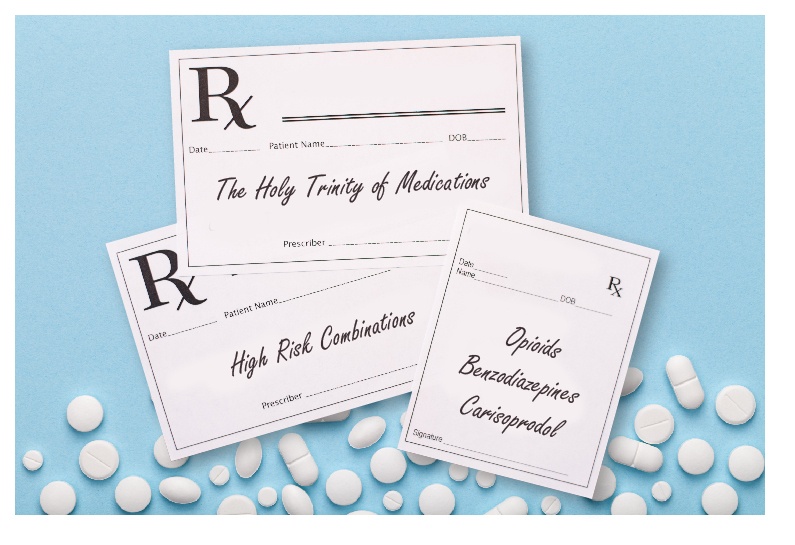The Holy Trinity of Medications: High Risk Combinations

While opioids have a proper role in pain management, much of the recent news related to opioids focuses on their dangerous and addictive nature. Adverse effects of opioids have touched countless lives and with the recent announcement by President Trump declaring the opioid epidemic a national public health emergency, countless people have become aware that opioids are associated with addiction, abuse, diversion, and other risks. While it’s important to know that using opioids alone is dangerous, the combination of opioids with other medications can often be even more dangerous.
When dealing with painful injuries and working towards recovery, it’s important to know as much as you can about your medications. One such thing to educate yourself on is the high risk combination of medications often prescribed for pain management. This combination is frequently referred to as the “Holy Trinity.” The, “Holy Trinity” is a combination of opioids, benzodiazepines and carisoprodol (a muscle relaxant also known as Soma). While independently each of these medications have significant benefits for injured workers, when combined, they can create significant risks. Risks may include central nervous system (CNS) depression and respiratory depression. These effects can cause drowsiness, dizziness, weakness, trouble breathing, and at their worst, death. The “Holy Trinity” combination is also known to create a ‘high’ that has shown to be extremely addictive, creating new challenges in medical treatment.
Why is the, “Holy Trinity” combination so dangerous?
Each medication included in the, “Holy Trinity” have significant benefits for pain relief, but they also have their own undesirable effects. When you combine these medications, you also combine all the risks associated with them. Opioids have been shown to suppress breathing. It is believed that this occurs because opioids decrease the responsiveness of certain receptors in the body, including those that respond to changes in oxygen and carbon dioxide. This interference in the respiratory system can impact breathing.
Benzodiazepines at high doses or in combination with other medications can also potentially suppress breathing by interfering with the receptors in the brain that control the respiratory system and, in some cases, benzodiazepines cause certain muscles to relax, which can impact breathing.
Finally, Carisoprodol is a muscle relaxant that is broken down in the liver which can bind to receptors that enhance the effects of benzodiazepines. While the body can often adjust to and compensate for these effects, it is important to understand that combining medications or taking too much can elevate the risks associated with these medications. Therefore, it is important to be weary of concurrent utilization of these medication types and work with your doctors to figure out the best way to treat injuries while reducing unnecessary risks. These risks are so high that on August 31, 2016, the U.S. food and Drug Administration (FDA) released a drug safety communication. In the communication, the FDA issued its strongest warning available regarding the serious risks, including death, associated with the combination of opioid pain medicines and benzodiazepines.
Know the Potential Risks and Benefits
There are unique interactions that take place when agents are combined. Due to these interactions, it is important for patients and their doctor to make decisions about continuing, changing or stopping mediations based off an understanding of the potential risks and benefits of doing so. Medications should only be used if the benefits outweigh the potential harms. The more that is known about medications and their risks and benefits, the better equipped we are to manage pain. One way to learn more about medications is by reviewing the information that comes with your prescription. In addition talk to a pharmacist and ask questions. Always keep goals and priorities in mind when dealing with pain management and create open dialogue with your doctor about what medications may or may not be right.
Other Posts You Might Be Interested In
Subscribe to email updates
Stay up-to-date on what's happening at this blog and get additional content about the benefits of subscribing.


